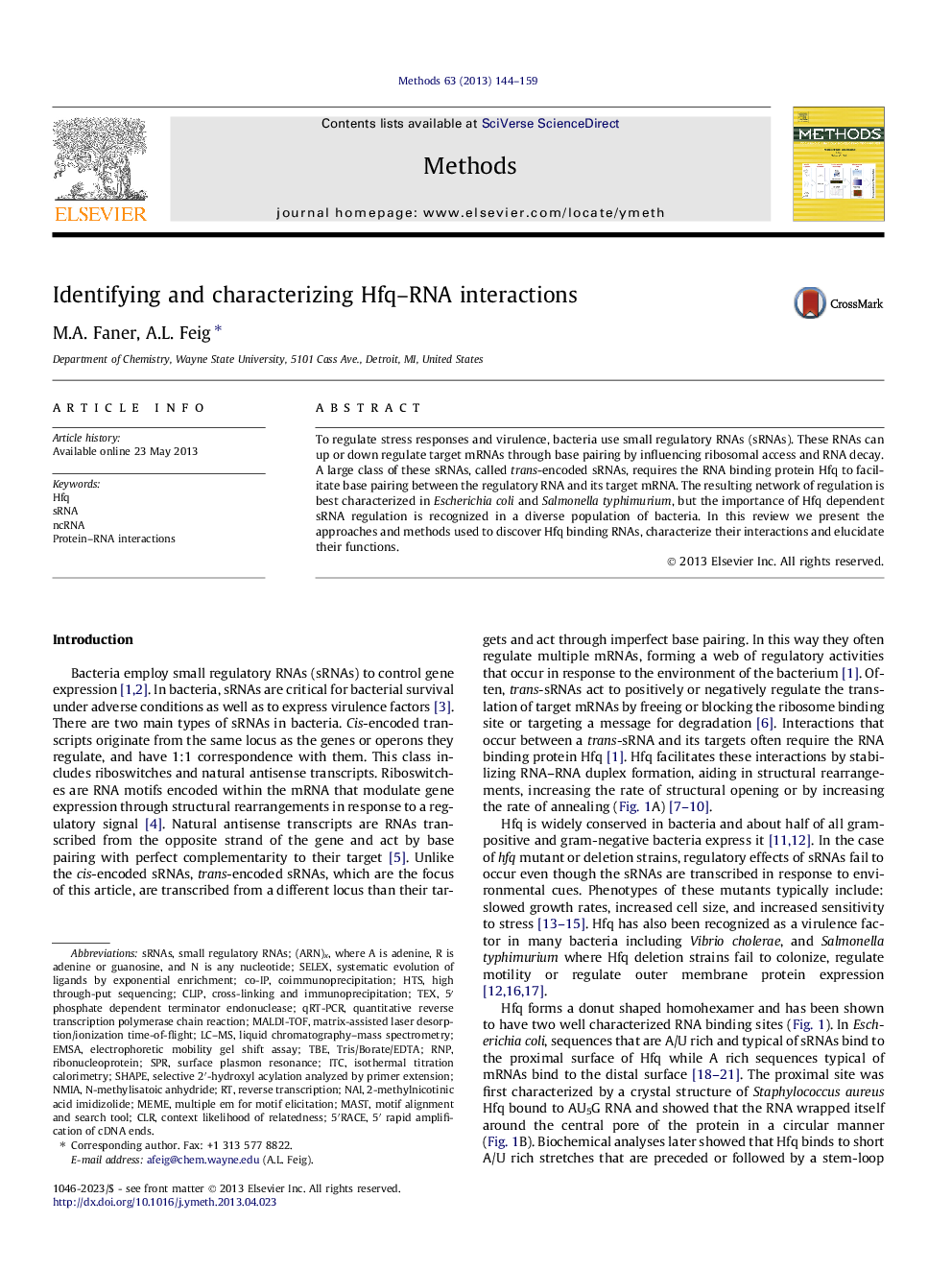| Article ID | Journal | Published Year | Pages | File Type |
|---|---|---|---|---|
| 1993493 | Methods | 2013 | 16 Pages |
•Techniques used for the discovery and study of Hfq-–RNA interactions are discussed.•The strengths and optimal application of the approaches are considered.•Issues unique to studying Hfq–RNA systems are addressed.
To regulate stress responses and virulence, bacteria use small regulatory RNAs (sRNAs). These RNAs can up or down regulate target mRNAs through base pairing by influencing ribosomal access and RNA decay. A large class of these sRNAs, called trans-encoded sRNAs, requires the RNA binding protein Hfq to facilitate base pairing between the regulatory RNA and its target mRNA. The resulting network of regulation is best characterized in Escherichia coli and Salmonella typhimurium, but the importance of Hfq dependent sRNA regulation is recognized in a diverse population of bacteria. In this review we present the approaches and methods used to discover Hfq binding RNAs, characterize their interactions and elucidate their functions.
